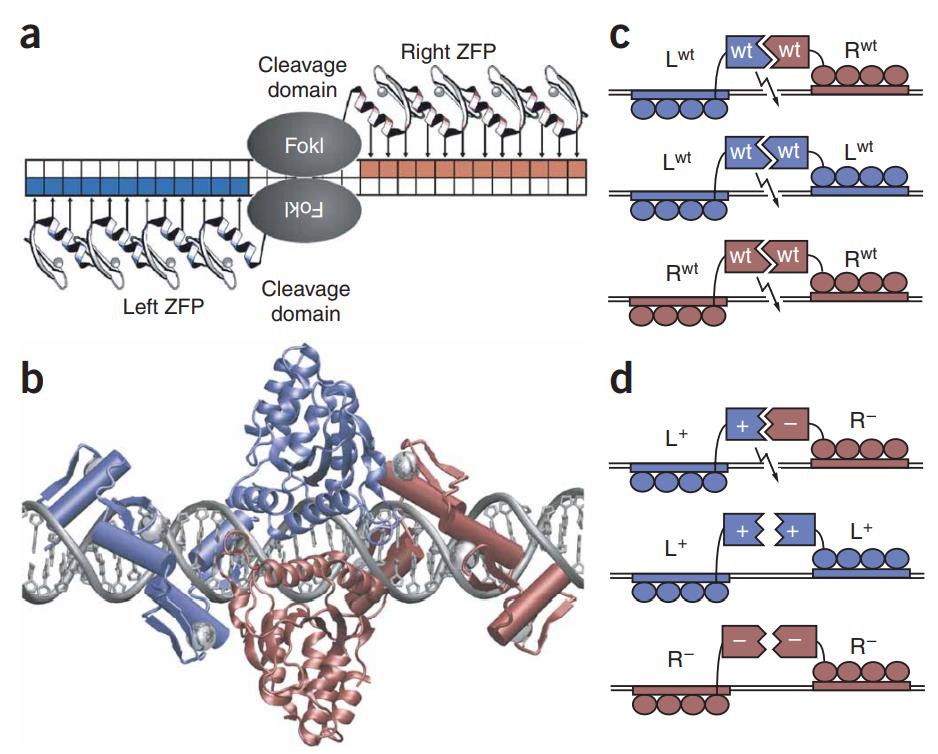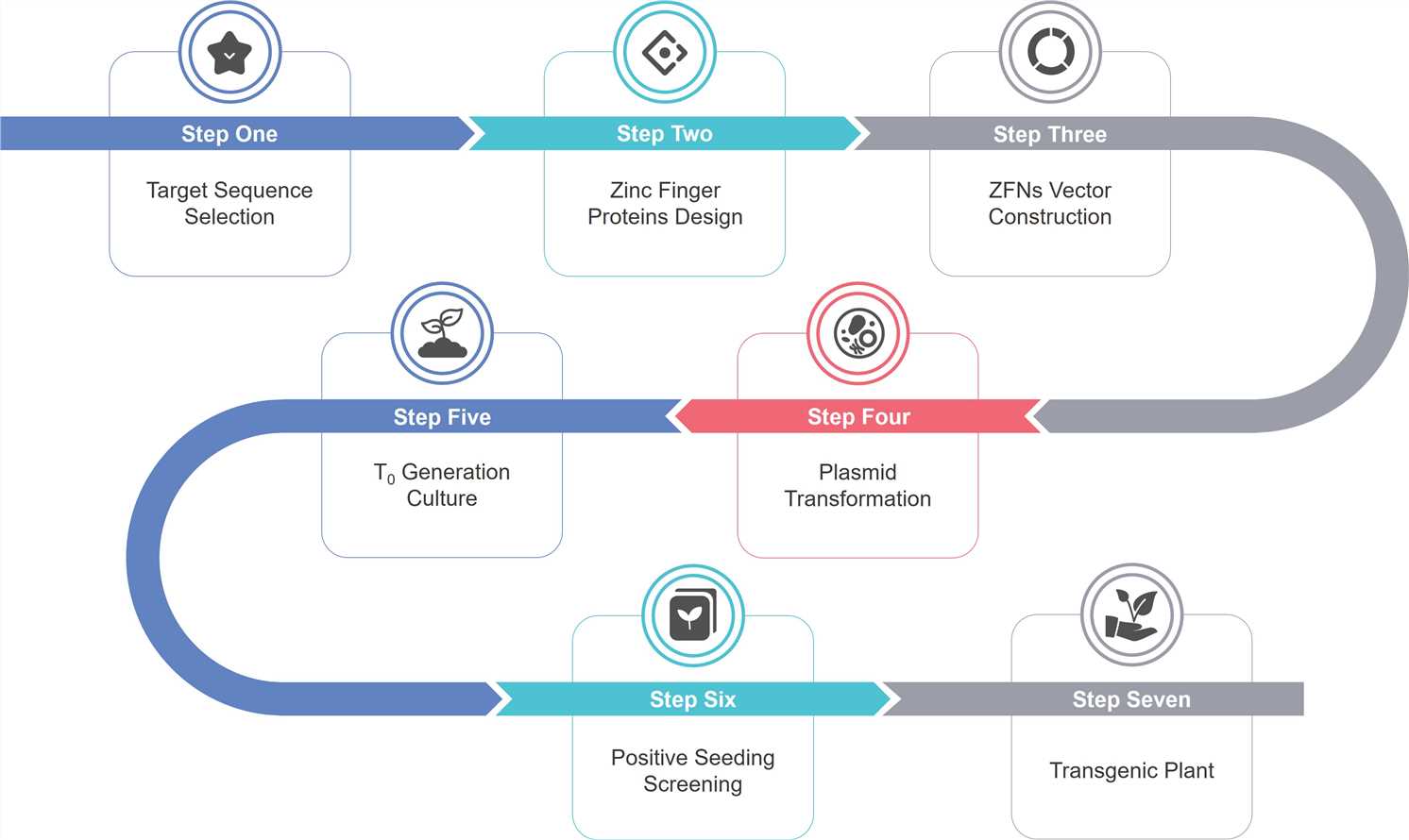As an expert in genetically modified plants, Lifeasible provides customers with high-quality zinc finger nucleases (ZFNs) gene editing services. Our experts have extensive experience in ZFN gene editing technology and are able to design personalized project solutions for customers.
Zinc finger nucleases (ZFNs), firstly used as artificial restriction enzymes for genome editing, are a class of powerful tools for the addition, deletion or substitution of genetic sequences with much greater precision than traditional plant breeding techniques, exhibiting great prosperous future for crop quality improvement.
ZNF includes a zinc finger DNA-binding domain and a DNA cleavage domain. The DNA-binding domain is usually composed of 3-4 zinc fingers proteins with conjugated Cys2His2 motifs that each recognizes a specific nucleotide triplet based on the residues in their α helix. The DNA cleavage domain is from the FokI restriction endonuclease which must dimerize to cut DNA in a nonsequence-specific manner, and then induces DSBs (DNA double strand breaks). The DSBs are repaired by two pathways: NHEJ (non-homologous end joining), leading to nucleotide insertions, deletions, or nucleotide substitutions in the broken regions, or HDR (homology directed repair), which uses homologous DNA as a template to restore the DSBs allowing for precise and controllable repairs.
 Figure 1. DNA recognition and cleavage by ZFNs. (Miller, et al., 2007)
Figure 1. DNA recognition and cleavage by ZFNs. (Miller, et al., 2007)
Lifeasible has ultra-modern equipment, first-class experts in gene editing and plant science, and we have established close cooperation with renowned companies to provide high quality and short turnaround services.
We offer a variety of zinc finger protein design technologies, such as oligomerized pool engineering (OPEN) system, phage display technology, bacterial one-hybrid, and modular assembly.
Our experts are able to construct heterodimers of FokI domains to improve the specificity of cleavage.
The ZFN services we provide are suitable for a variety of organisms, including Arabidopsis, rice, wheat, alfalfa, corn, cotton, sorghum, soybean, sugarbeet, cabbage, tobacco, eggplant, cucumber, potato, petunia, oilseed rape, etc.
Lifeasible welcomes customers for hands-on help right from the start of their projects. Our tech representatives are happy to provide a thorough walk-through to acquaint the customer with our featured technologies, service plans, collaboration options and more.

01
Experienced expert team
02
Gene editing experience in multiple crops
03
Personalized solutions
04
Mature ZFN technology platform
Reference
Lifeasible has established a one-stop service platform for plants. In addition to obtaining customized solutions for plant genetic engineering, customers can also conduct follow-up analysis and research on plants through our analysis platform. The analytical services we provide include but are not limited to the following:
Get Latest Lifeasible News and Updates Directly to Your Inbox
January 27, 2025
Decomposition of Auxin by Plant Rhizosphere Microorganisms
January 25, 2025